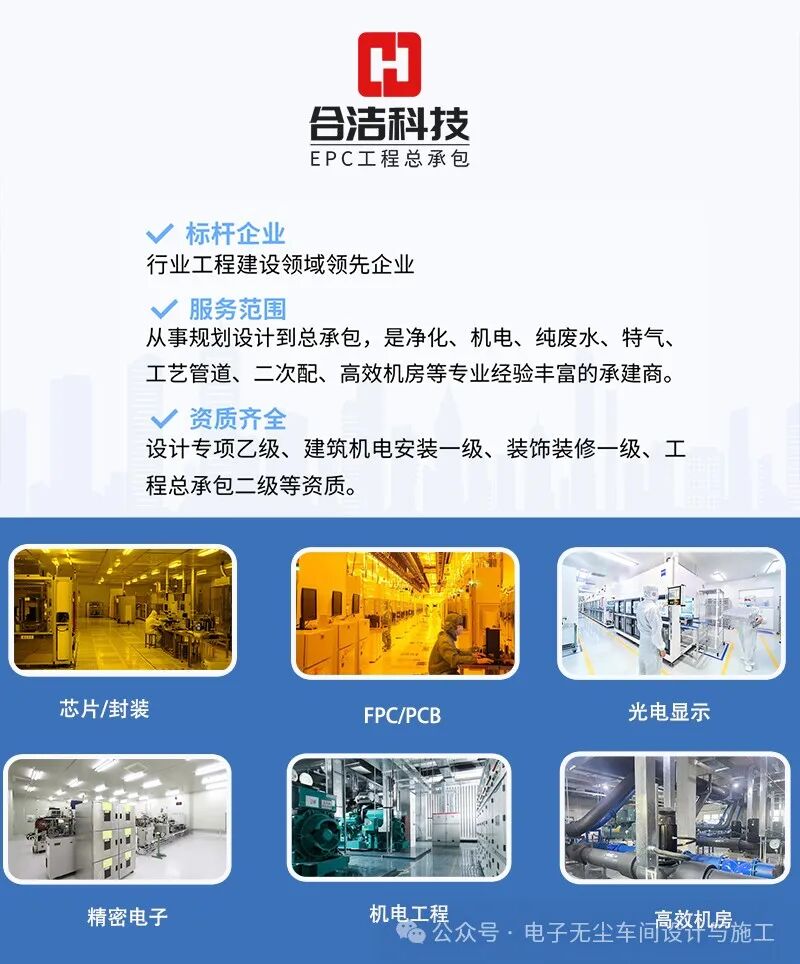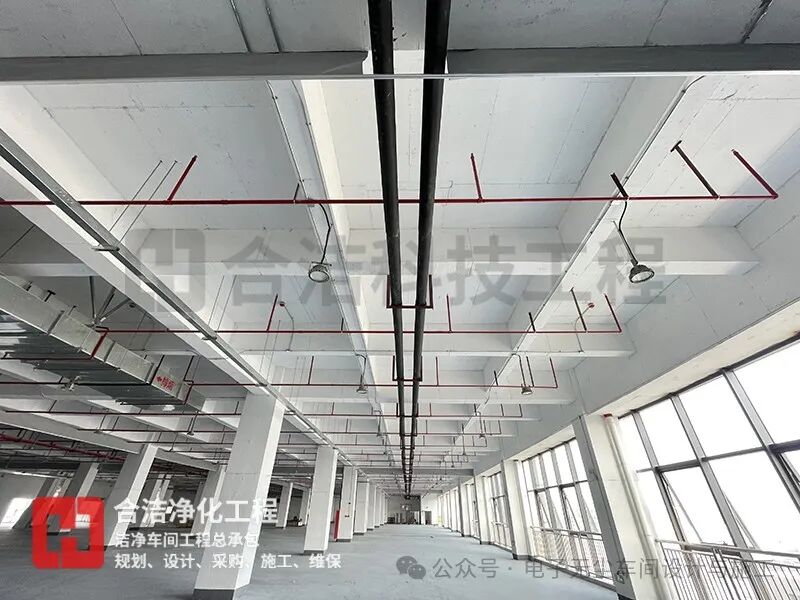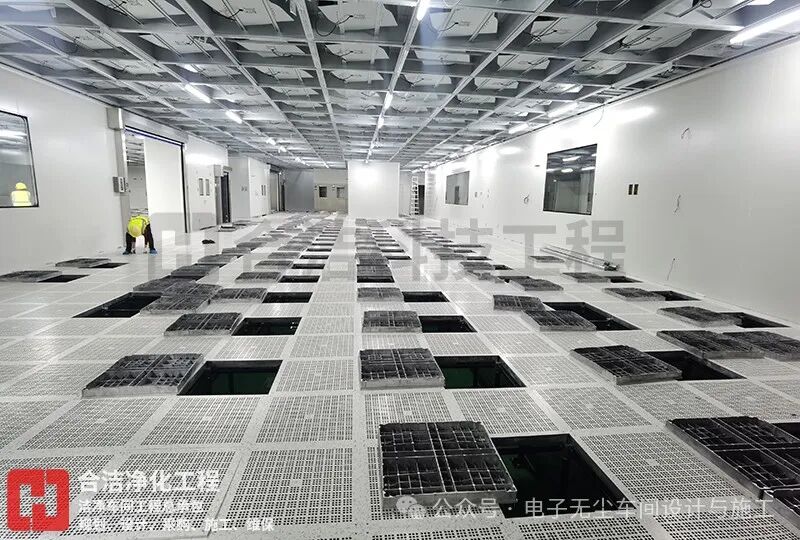The cleanliness requirements for chip packaging and testing areas vary based on specific process steps and product characteristics, typically ranging from ISO Class 5 (100-level) to ISO Class 7 (10,000-level). Below are the cleanliness level classifications and criteria for different areas; let’s explore this together with Hejie Technology Cleanroom Engineering Company!

1. Cleanliness Requirements for Core Packaging Areas
ISO Class 5 (100-level)
Applicable Steps: High-precision packaging (such as flip chip, wafer-level packaging), photolithography areas.
Particle Control: 0.5μm particles ≤ 3,520 particles/m³ (or ≤ 100 particles per cubic foot).
Airflow Organization: Unidirectional flow (laminar flow) design, airspeed 0.3-0.5 m/s.

ISO Class 6 (1,000-level)
Applicable Steps: Standard packaging (such as wire bonding), testing areas.
Particle Control: 0.5μm particles ≤ 35,200 particles/m³ (or ≤ 1,000 particles per cubic foot).
ISO Class 7 (10,000-level)
Applicable Steps: Back-end packaging (such as molding, cutting), packaging areas.
Particle Control: 0.5μm particles ≤ 352,000 particles/m³ (or ≤ 10,000 particles per cubic foot).

2. Cleanliness Requirements for Other Auxiliary Areas
Material Storage Area: ISO Class 8 (100,000-level).
Changing Rooms/Buffer Zones: ISO Class 7-8.
General Corridors/Office Areas: No cleanliness requirements, only need comfortable air conditioning.
3. Basis for Cleanliness Levels
International Standards: ISO 14644-1 (based on the number of 0.1μm/0.5μm particles).
Industry Standards: SEMI standards (such as SEMI F72).
Process Requirements: High-precision packaging (such as 3D IC) requires higher cleanliness.

4. Key Control Measures
Air Filtration: HEPA/ULPA filters (100-level areas must have ≥99.99% filtration efficiency).
Pressure Differential Control: Pressure differential between adjacent areas ≥5Pa to prevent contamination spread.
Static Electricity Protection: Anti-static flooring (resistance 10⁴-10⁹Ω), ion blowers.

The cleanliness of the chip packaging and testing area should be flexibly adjusted based on process sensitivity and product requirements, typically with the core area at ISO Class 5-6 and the auxiliary area at ISO Class 7-8. The specific levels should be determined in conjunction with the ISO 14644 standard and actual production needs.